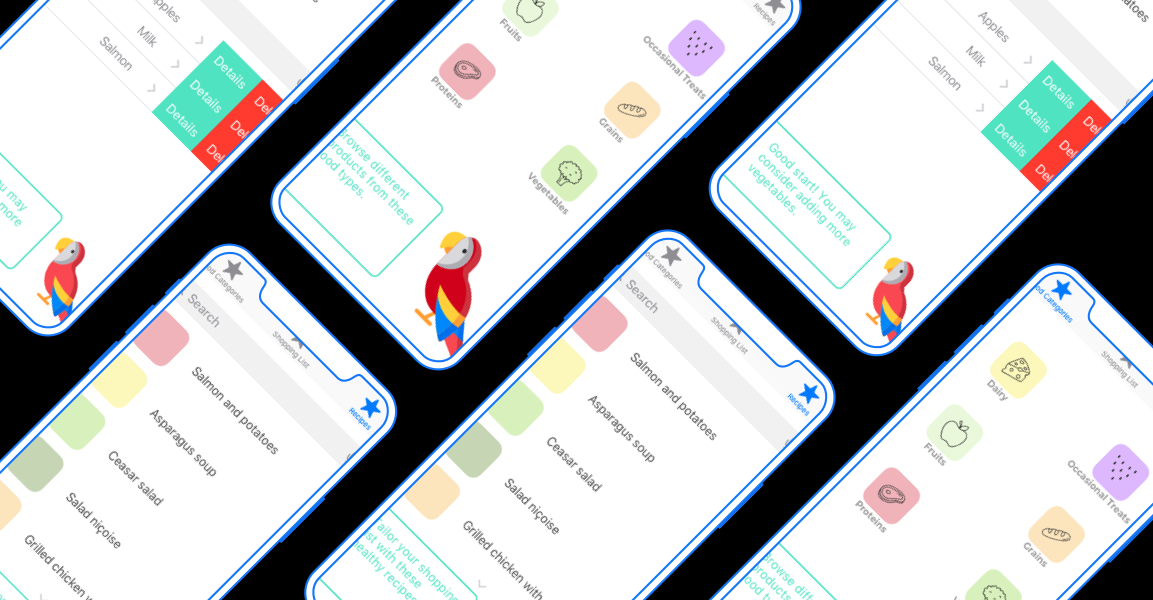
An intervention promoting a balanced diet for children through child-parent negotiations
The team designed a mobile application to encourage healthy eating for children. We targeted the problem of obesity and its increasing costs for both healthcare and for human life. Our solution is a shared child-parent shopping list that aims to change behaviour from unhealthy eating habits to healthy eating habits for children at young age in order to ensure they carry on these habits to adulthood. Our design is meant to be used both by the child and the parent prior to going to the store so they can both agree and commit to healthy purchasing decisions and a healthy diet.
Theoretical Framework
Our theoretical framework combined Social Learning Theory and Elaboration-Likelihood Model for achieving behaviour change. In addition we included the elements of negotiation, child autonomy, and the tendency for children to avoid new foods (neophobia) into consideration in our design process.
For applying Elaboration-Likelihood Model, we propose that what motivates children is more likely to be superficial methods of persuasion. Therefore, we went with a colourful and playful design to attract attention and encourage the desired behaviour change. For Social Learning Theory, we propose that children learn healthy eating habits from their parents. Therefore, our design involves both the parents and the children in decision-making, so that children may follow the example of their parents who are committed to the intervention as well.
Design
Our design included a food category browser, a shopping list, and a recipe list. The food category browser allows the user to pick a balanced set of food items to their shopping list. The shopping list itself displays what the user has selected and gives advice on how to make it more balanced. The recipe list gives recommendations for healthy recipes and helps the user make a healthy shopping list.
Validation
The proposed validation for our behaviour change design intervention is three-fold:
A pilot study to investigate possible design flaws before the core study starts
An experimental study on families with children over a period of 12 weeks to determine the intervention’s effectiveness
A follow-up study comparing different types of implicit communication and their effects to be included in the intervention




